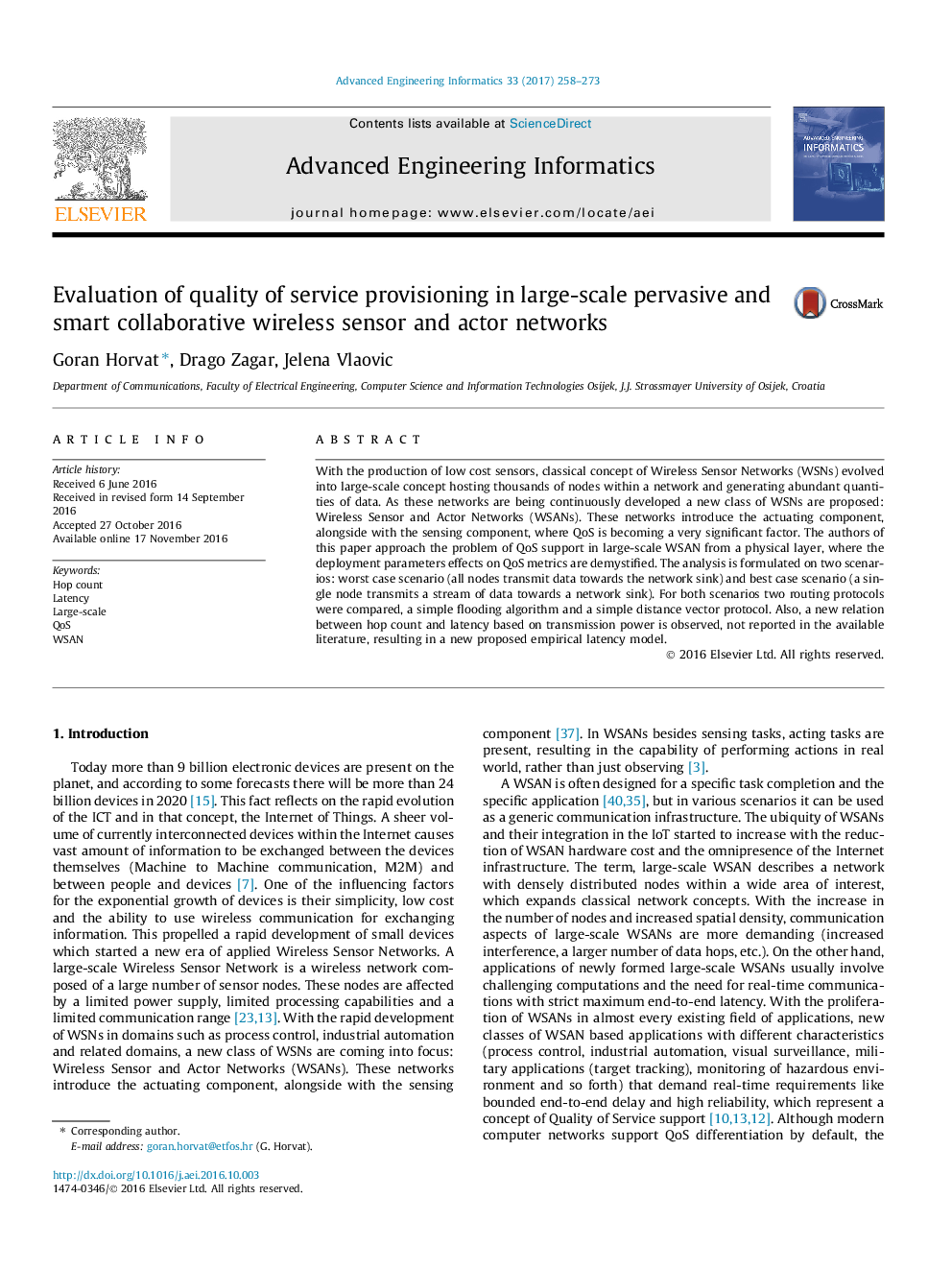| Article ID | Journal | Published Year | Pages | File Type |
|---|---|---|---|---|
| 6478371 | Advanced Engineering Informatics | 2017 | 16 Pages |
With the production of low cost sensors, classical concept of Wireless Sensor Networks (WSNs) evolved into large-scale concept hosting thousands of nodes within a network and generating abundant quantities of data. As these networks are being continuously developed a new class of WSNs are proposed: Wireless Sensor and Actor Networks (WSANs). These networks introduce the actuating component, alongside with the sensing component, where QoS is becoming a very significant factor. The authors of this paper approach the problem of QoS support in large-scale WSAN from a physical layer, where the deployment parameters effects on QoS metrics are demystified. The analysis is formulated on two scenarios: worst case scenario (all nodes transmit data towards the network sink) and best case scenario (a single node transmits a stream of data towards a network sink). For both scenarios two routing protocols were compared, a simple flooding algorithm and a simple distance vector protocol. Also, a new relation between hop count and latency based on transmission power is observed, not reported in the available literature, resulting in a new proposed empirical latency model.
